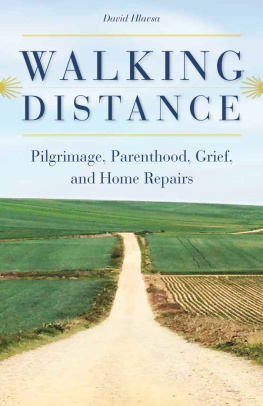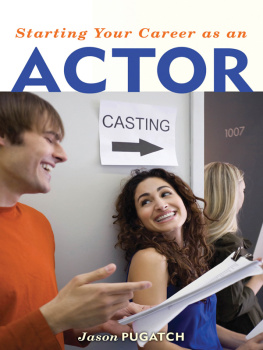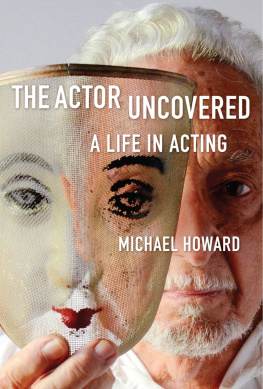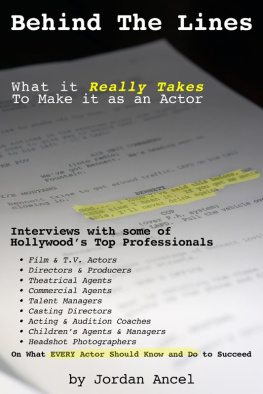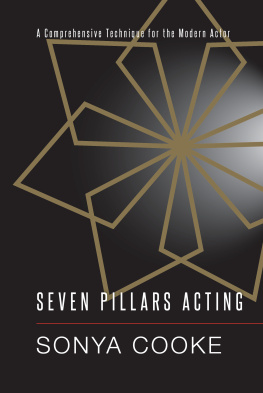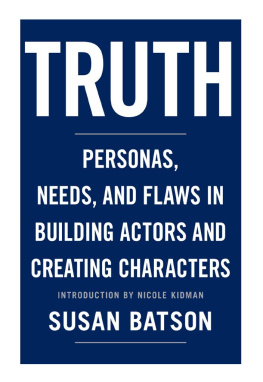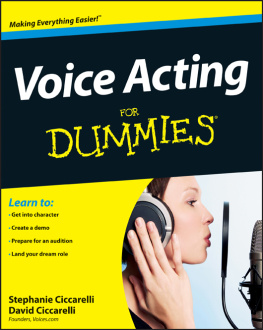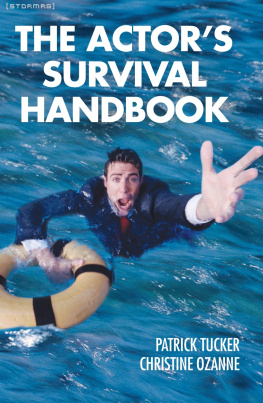Praise for An Actor Rehearses
With all of the old wives tales about actors and general skepticism surrounding the craft, Hlavsa single-handedly provides a compelling, complimentary argument for the difficulties and triumphs of the profession of acting.
Molly Smith, Artistic Director, Arena Stage
Hlavsa leads the reader through the rehearsal process step by step, with such thoroughness and clarity that his book cannot help but provide an actor with both insight and encouragement.
M. Burke Walker, Founding Artistic Director, The Empty Space Theatre
Essential. This book will go near the top of my must read booklist for actors and directors.
Mark Jenkins, Head, MFA Professional Actor Training Program and MFA Directing Program, University of Washington School of Drama
This book can be used as a how-to manual for the beginning actor, as well as a source of replenishment and inspiration for the grizzled veteran. As a director, actor, and acting teacher, I will call upon Mr. Hlavsas wisdom often.
Tony Pasqualini, Actor, Director, and Founder, Freehold Theatre, Studio and Lab
One of the best books about acting I know.
Alan MacVey, Chair, Theatre Arts Department, University of Iowa
David Hlavsas book, An Actor Rehearses , delivers exactly what it promises: a blueprint for a clear, doable step-by-step process taking the actor from the moment of casting through performance.
Barbara Mackenzie-Wood, Head of Acting/Music Theatre, Carnegie Mellon University School of Drama
This is an important and wonderful book. If you are a serious student of acting, you should read An Actor Rehearses .
Irwin Appel, Director of BFA Actor Training Program, University of California, Santa Barbara
Actors, directors and teachers of actors are always on the lookout for clear and practical information that they may implement immediatelybe it in the classroom, rehearsal or production. An Actor Rehearses is just such a resource.
Paul Kassel, Head of Performance, Department of Theatre Arts, State University of New York at New Paltz
2006 David Hlavsa
All rights reserved. Copyright under Berne Copyright Convention, Universal Copyright Convention, and Pan-American Copyright Convention. No part of this book may be reproduced, stored in a retrieval system, or transmitted in any form, or by any means, electronic, mechanical, photocopying, recording, or otherwise, without prior permission of the publisher.
10 09 08 07 06 5 4 3 2 1
Published by Allworth Press
An imprint of Allworth Communications, Inc.
10 East 23rd Street, New York, NY 10010
Cover design by Derek Bacchus
Interior design by Robin Black, Blackbird Creative LLC
Page composition/typography by: Integra Software Services, Pvt. Ltd., Pondicherry, India
Cover photo credit: A digital image, taken by Gerry Goldstein, of Terry Greiss and Damon Scranton of the Irondale Ensemble Project, in rehearsal. Gerry Goldstein
ISBN-13: 978-1-58115-462-7
ISBN-10: 1-58115-462-3
Library of Congress Cataloging-in-Publication Data:
Hlavsa, David.
An actor rehearses: what to do whenand why / David Hlavsa.
p. cm.
ISBN-13: 978-1-58115-462-7 (pbk.)
ISBN-10: 1-58115-462-3 (pbk.)
1. Theater rehearsals. I. Title.
PN2071.R45H53 2006
792.028dc22
2006026629
Printed in Canada
Dedication
To my wife, Lisa Holtby, and my son, Benjamin.
My hearts.
Acknowledgments
I grew up in the theatre. Thats not to say that I came from a theatrical family or started acting at a particularly young age; I didnt. But a good amount of what Ive managed to learn about relationships, community, hard work, expressiveness, honesty, responsibility, and so on, I owe to working on plays.
Much of what I have to offer as a teacher and director comes from my own acting and directing teachers (in order of appearance: Jordan Hornstein, Paul Zimet, Alan and Carol MacVey, Jack Sydow, Bob Loper, Sue-Ellen Case, Paul Hostetler, and Barry Witham). They taught me what I know about the craft, but more importantly, they insisted that I get my own act together. Following their advice, Ive found that whatever work Ive done on myselftrying to become a more effective leader, a more loving husband and father, a kinder personhas helped me to mature as an actor and director as well.
In this regard, a lot of the people who have helped me to get better at what I do for a living are not at all involved with theatre. I owe a great deal to Bob and Judith Wright; many of the techniques and exercises in this bookparticularly in the sections dealing with emotion and consciousnessare inspired by their work at Chicagos School of Exceptional Living. My fellow travelers and good friends, Paul Fischburg, Danny Geiger, Todd Jacobs, Denis Martynowych, Joe Shirley, and Carl Woestwin have also been powerful teachers.
This book would not have been possible without the support of Saint Martins University (especially my colleagues on the Faculty Development Committee, who granted me a sabbatical to write it) and of my wife, Lisa Holtby, a fine writer and teacher (check out her book at www.lisaholtby.com ), a savvy businesswoman, and a very smart editor.
Many thanks to my students, especially Brandon Barney, Beth McCoy, Christian Pearson, and Craig Woodworth, for test-driving this material in acting class and rehearsal; to David Robinson, Meg Patterson, Irwin Appel, Annette Romano, and Dick and Vivi Hlavsa for reading early drafts of the book and providing much-needed encouragement and criticism; to David Price, Mark Glubke of Back Stage Books, and Linda Konner for advice on publishing; and to Nicole Potter-Talling, Jessica Rozler, and Tad Crawford at Allworth Press for seeing the good in my manuscript and for making it better.
Im sure there are other people I should acknowledge. New acting exercises and rehearsal techniques spread through the profession like viruses, hitting everyone at once and mutating rapidly; its often hard to say where and when weve picked them up. I have tried to be scrupulous about giving credit, but Im afraid this book is bound to contain a measure of unconscious pilferage. My apologies to anyone Ive slighted.
Contents
Introduction: Why Are You on Stage?
ITS THE FIRST DAY OF REHEARSAL . After all the work, all the planning thats already gone into the show, after all the stress and excitement of auditions, after the actors, the designers, the stage managers, the director have all arranged their lives to be here, its time for us to get down to actually rehearsing the play. At last, everyone is gathered in one room. People are excited, nervouseven a little giddy.
Happily, theres a ritual to follow on the first day: you sit around a big table, and you read the play aloud. So thats what we do. People start to read the words. Everyone flips pages in unison. Some people sound convincing; some dont. Some plunge right in; some seem more reserved. Some get laughs. Somebody does a scene on the verge of tears. As he reads one of his longer speeches from the play, one actor thinks, I was born to play this role, while the guy sitting next to him is thinking, I could do better than that. The director sits very still, listening intently, trying to stop asking herself whether the leading actor shes cast is really right for the part. Two actors, a man and a woman who have never met before, are playing a love scene. The script tells us the characters are half-dressed, kissing each other passionately. She sneaks a glance at him, feels no attraction whatsoever, and wonders how on earth shes going to pull this off. By the time weve finished reading through the play, people are still excited, but a kind of sobriety has descended upon the room.
Next page

